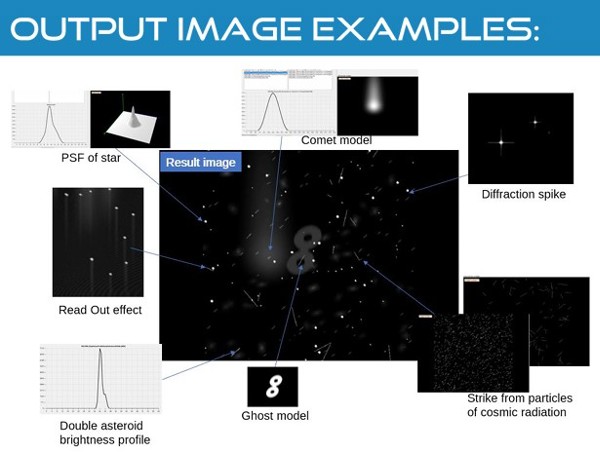European Space Agency: Delivery of a Star Simulator for Fine Guidance Sensor under PECS5 for ESA
As part of the PECS5 program, Trifid Automation received the Sky Simulator for Fine Guidance Sensor project. The simulator is intended to enable the development and testing of algorithms used for FGS-type sensors for precise positioning of astronomical satellites of the European Space Agency (ESA). This project aims to support ESA missions in enhancing astronomical research.
As part of the PECS5 program, Trifid Automation received the Sky Simulator for Fine Guidance Sensor project. The simulator is intended to enable the development and testing of algorithms used for FGS-type sensors for precise positioning of astronomical satellites of the European Space Agency (ESA). This project aims to support ESA missions in enhancing astronomical research.
Objectives:
- Develop a star simulator using the database of the Gaia astrometric satellite, which contains approximately 1 billion stars ranging from 3 to 20 magnitudes.
- Ensure high fidelity and accuracy in star display.
- Create an interactive and user-friendly interface for researchers and educators.
Approach:
- Besides regular consultations with its own AOCS specialists, ESA arranged several consultations with teams from selected companies working in the area of satellite position detection to gather detailed requirements.
- We leveraged our experience in image processing, the advanced software package Halcon by MVTec, and our knowledge of image sensors and astronomy.
- We divided a fairly extensive task into 43 layers, allowing us to allocate the development and testing of individual layers to several team members.
- We designed a fairly extensive user interface for interacting with each layer of the simulator separately.
Implementation:
-
Phase 1: Requirements Analysis and Planning
- We conducted detailed discussions with ESA staff and AOCS specialists from supplier companies to understand specific needs.
- Development of a project roadmap and milestones.
-
Phase 2: Development
- We designed the core simulation program and a mechanism to work with an ever-growing database of variables.
- Integration of astronomical data from the ESA Gaia DR2 and eDR3 databases.
- Development of a modular and data-modifiable HMI user interface.
-
Phase 3: Testing and Verification
- Our team conducted tests simulating FGS satellites Euclid and Ariel to verify the accuracy of star positions and brightness.
- We used HST level 1 images for testing.
- Collection of feedback from the ESA team and made necessary adjustments.
-
Phase 4: Delivery and Training
- Delivery of the simulator to the ESA ESTEC headquarters in Noordwijk, Netherlands.
- Preparation of a training video and extensive documentation to familiarize users with the simulator's functionality.
Results:
- Successfull delivery of the SkySim4FGS software package with the required functionality.
- We added another tool to ESA's arsenal for developing and testing algorithms used for FGS-type sensors for precise positioning of astronomical satellites.
- Our team also received additional suggestions for expanding the functionality of our software during the project handover meeting.
Conclusion:
The collaboration between Trifid Automation and the European Space Agency led to the successful development and delivery of a highly complex star simulator for FGS positioning sensors. We continued the project in the PECS7 challenge in cooperation with MFF UK, addressing the impact of light pollution on the AOCS functionality of FGS sensors.
Read More:
Visit our blog to learn more about our visit to ESA in the Netherlands and subscribe to our Newsletter to stay in touch.




